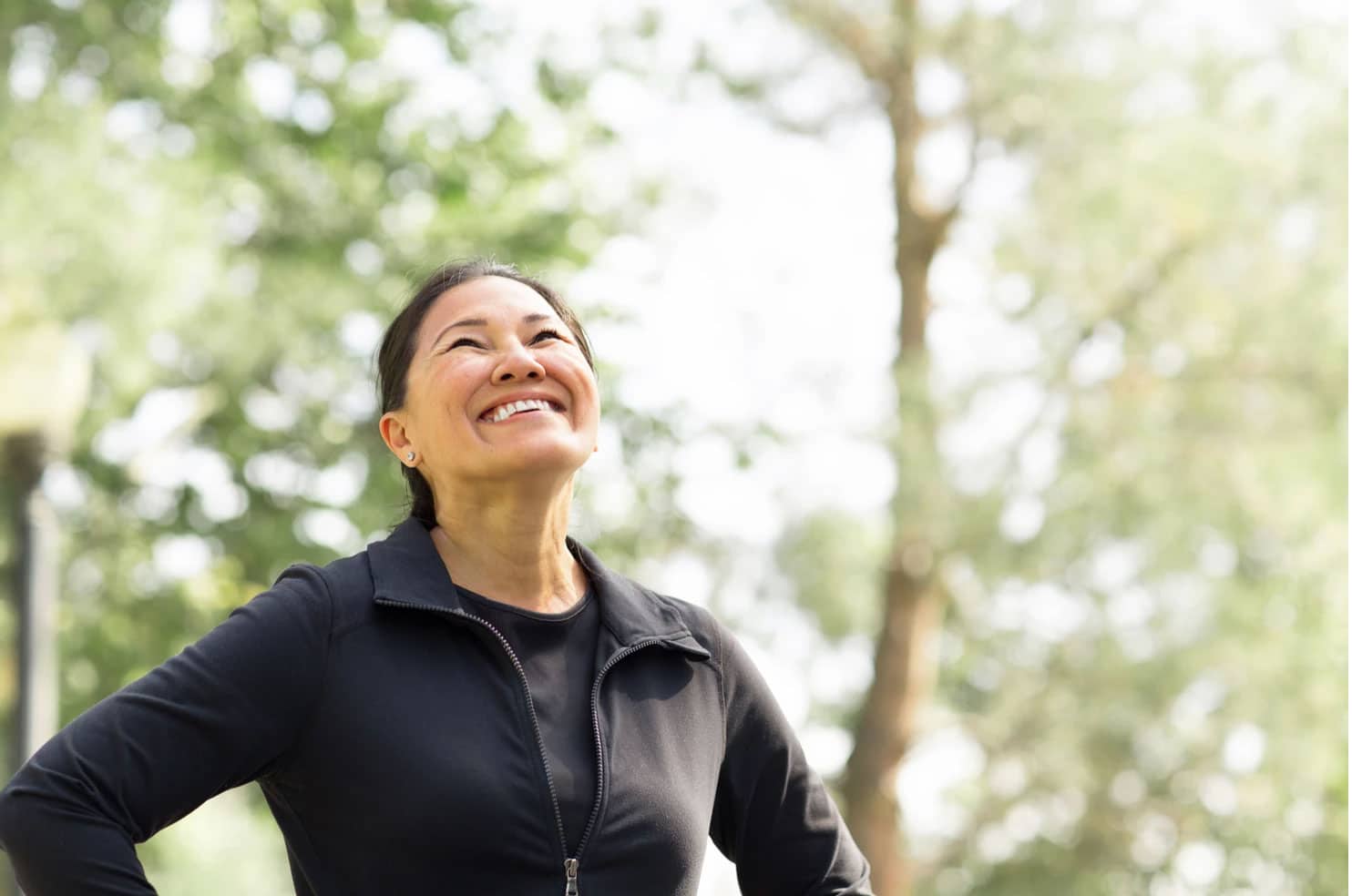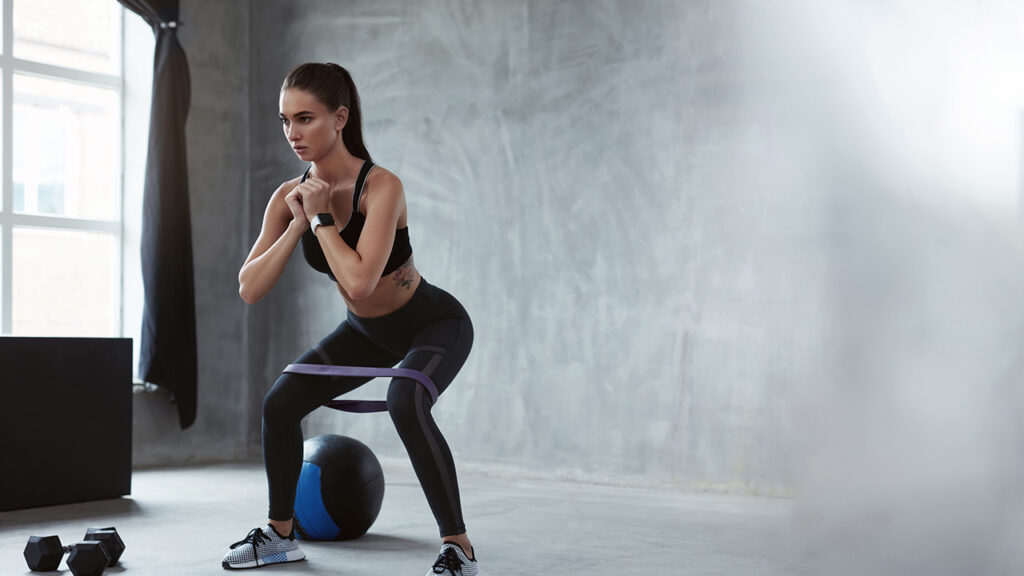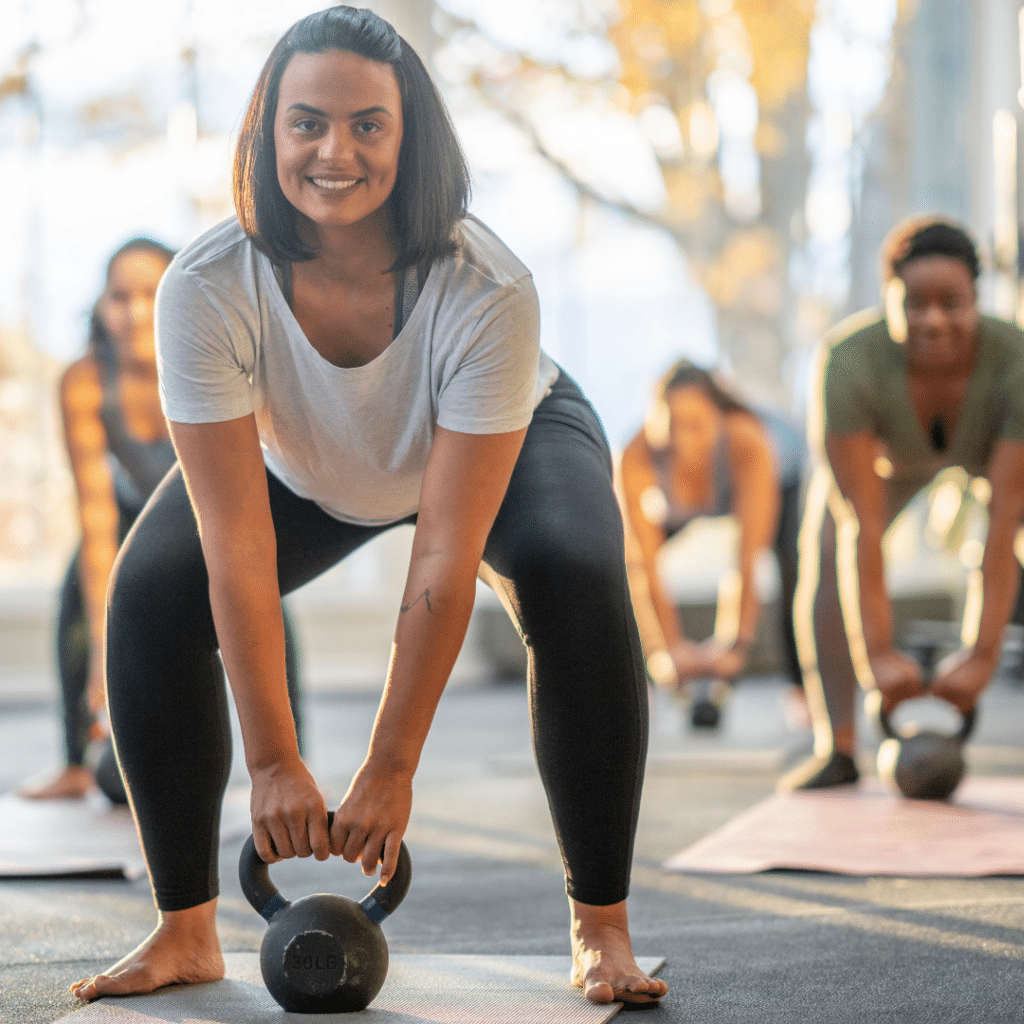
Breathing Mechanics and Physiology: Why Better Breathing Means Better Health
We breathe over 20,000 times a day, yet most of us don’t think twice about it. But if you struggle with chronic pain, fatigue, stress,

As we age through our lifetime or watch those around us experience the later years of life, we start to see telltale signs of physical deterioration and increased difficulty with activities of daily living.
Things that may have felt like a simple task in the past might not be as easy as they used to be like walking up and down a flight of stairs, moving furniture, or shortness of breath after prolonged walking.
If these sound like experiences you or someone else around you has been noticing as of late, these are known as the symptoms of ageing; a common group of physical indicators demonstrating a potential loss of muscle mass, bone density, or menopausal-related side effects.
So, how then do you combat these effects for healthy ageing?
In order to combat (and remediate) these inevitable presentations it is always best to first consult your GP to determine whether any underlying causes have predetermined these health outcomes.
However, beyond this, a form of physical treatment that has been heavily researched and shown to mediate and minimise the effects of ageing is regular participation in structured and consistent exercise.
The human body is prone to adaptation when experiencing increased stress on a physical level, hence the introduction of exercise causes the body to respond with adaptations of increased muscle building and bone strengthening to adjust to the physical demands of exercise.

Although many unique conditions may contribute to an individual’s presentation of physiological ageing and its related changes, the three most common and contributing factors are seen to be:
These 3 key factors impede (to varying degrees) one’s ability for healthy ageing.
And thus can be seen as Challenges to Healthy Ageing.

Sarcopenia is defined by the apparent loss of skeletal muscle mass and functional capacity.
Although it is more common in elderly individuals it is not limited to this demographic by any means. The presence of sarcopenia can stem from physical disability, obesity, poor quality of life, and lack of physical activity.
Physical ageing of the human body is still proven to be the most common cause for the presentation of sarcopenia due to the fact that muscle mass has been shown to decrease approximately 3–8% per decade after the age of 30. The rate of this decline is even greater beyond the age of 60.
Alongside this, studies have also shown most men will lose about 30% of their overall muscle mass throughout their lifetime.
This inevitable loss of available muscle mass causes an indirect loss of functional capacity and bodily strength to tolerate daily tasks, leading to disability and low independence in elderly individuals.
A domino effect resulting from this loss of musculature is increased frailty and falls risk which in turn makes the human body far more vulnerable to further injury via dislocations, fractures and ligament tearing.
For those who do see a significant loss of muscle mass, they also tend to see an increase in fat mass which causes a change in body composition and may potentially inspire other comorbidities related to obesity such as poor insulin resistance and heart failure.

Past the age of 50, the human body has been shown to lose bone faster than it can be produced, with increased deceleration, particularly in women who see a loss of up to 20% of their bone density 5-7 years post-menopause.
The classification of Osteopenia and Osteoporosis is typically determined via a bone density test and its results known as T-Scores, these values are typically interpreted as indications of:
This reduction of bone density, similar to Sarcopenia, can lead to physical losses of functional capacity for the activities of daily living which may inspire a fracture and/or dislocation.
The two most common subcategories of Osteoporosis are:
Other contributing factors include hyperthyroidism, hyperparathyroidism, hypercortisolism, alcohol abuse, and lack of physical activity.

Menopause is characterised by the transitional cessation of a female’s monthly menstruation, meaning the ovaries of a female have stopped releasing eggs for fertilisation and the ability to fall pregnant via conception.
Most women begin to experience Menopause around the age of 45+ through symptoms of missed menstrual periods, hot flushes, reduced libido, night sweats, thinning hair, and infrequent weight gain/loss.
The primary concern that stems from this presentation however are the after-effects and health risks seen in post-menopausal women when their menstruation has ceased entirely.
The first concern post-menopause is the effect that the lack of menstruation has on bone health and potential Osteoporosis due to lower levels of oestrogen.
As the human body is already susceptible to developing Osteoporosis from ageing, post-menopausal presentation sees an average loss of 10% for a female’s bone mass in the first 5 years. This is yet another high risk for the increased likelihood of fractures/and or dislocations via frailty.
Another primary concern for postmenopausal women is the effect this presentation has on a female’s cardiovascular health as the cessation of menstruation sees an increase in low-density lipoproteins (commonly known as the bad form of cholesterol) and a decrease in high-density lipoproteins (known as good cholesterol).

When working to prevent the inevitable symptoms of ageing, the first course of action that any individual should be working towards is aiming to meet the physical activity and exercise guidelines set out by the World Health Organisation.
For reference, the current guidelines for adults aged 18-64 are:
In meeting these guidelines, an individual will ensure that they are minimising the likelihood of ageing symptoms via the physiological adaptations of exercise that keep the human body functional, healthy and happy.

Going beyond prevention and management, we as individuals can also take our health one step further by not only maintaining our current physiological health, but improving it through the continued exposure of physical activity at a higher level of intensity.
Recent research has shown several health benefits stemming from the exposure of high intensity exercise in middle aged adults which aims to reverse the effects of ageing by encouraging a faster adaptation response that increases the rate of muscle growth and minimises the loss of bone density.
There’s nothing to do but to do it!
If you’re new to exercise it’s probably best just to start small and focus on consistency rather than the type of exercise.
This can be as simple as:
Rebound and Refit classes focus on intensive strength-building exercises, utilizing a combination of resistance training, plyometrics, and cardiovascular activities to optimize physical conditioning. Participants engage in circuits designed to target multiple muscle groups, fostering comprehensive strength development and calorie expenditure.
Our Rebound class is all about easing you into the transition of becoming a regular exerciser with a variation of lower body, upper body and balance-based exercises at a moderate to high intensity.
The Rebound class is also great if you’re a bit cautious of any current injuries or just feel you need a bit of guidance for your introduction to exercise
On the other hand, our Refit class is more geared towards reaching that higher level of intensity to encourage our body to adapt to increased physical activity whilst coming back stronger each day.
The Refit class also involves a mix of upper and lower body exercises as well as aerobic exercise throughout.
This class is more suited to individuals who have experience participating in group classes and/or weight training, and are looking to stay one step ahead of their health.
We also offer 1 on 1 sessions with our Exercise Physiologists if you prefer a more hands on and attentive exercise approach. These sessions could also involve exercise education if you’re looking to train independently in the home or at a local gym but just need some guidance to get your started.
Don’t let age get the best of you, start your fitness journey today!
https://www.ncbi.nlm.nih.gov/pmc/articles/PMC4269139/
https://www.ncbi.nlm.nih.gov/pmc/articles/PMC2804956/
https://www.health.harvard.edu/staying-healthy/preserve-your-muscle-mass
https://www.mayoclinic.org/tests-procedures/bone-density-test/about/pac-20385273
https://www.ncoa.org/article/what-is-bone-density-a-practical-guide-for-older-adults
https://www.who.int/news-room/fact-sheets/detail/menopause
https://www.nia.nih.gov/health/menopause/what-menopause
https://www.healthdirect.gov.au/post-menopause
https://www.betterhealth.vic.gov.au/health/conditionsandtreatments/menopause-and-osteoporosis
https://www.who.int/news-room/fact-sheets/detail/physical-activity
https://www.sciencedirect.com/science/article/pii/S1279770723011958

We breathe over 20,000 times a day, yet most of us don’t think twice about it. But if you struggle with chronic pain, fatigue, stress,

From Melinda… For people who come to my classes and clients who have been seeing me for a while, may have heard some of the

Meet Susan Susan recently suffered a fall attempting to lift a 2.5kg bag of soil overhead in her garden shed when she felt her leg
Sign Up Below To Get Your Free RedoHealth Guide Now

By registering, you agree to receive SMS and email communications from RedoHealth. No spam guaranteed. Unsubscribe at anytime.